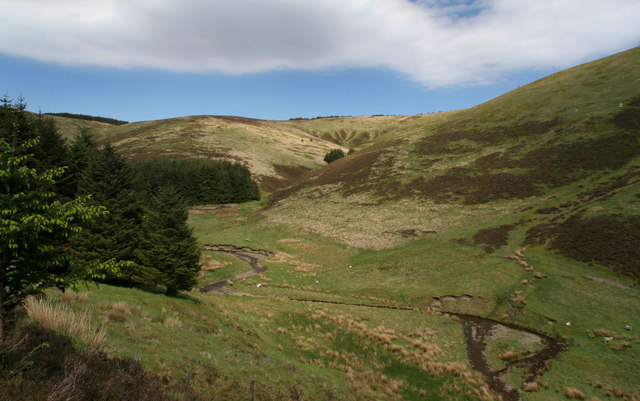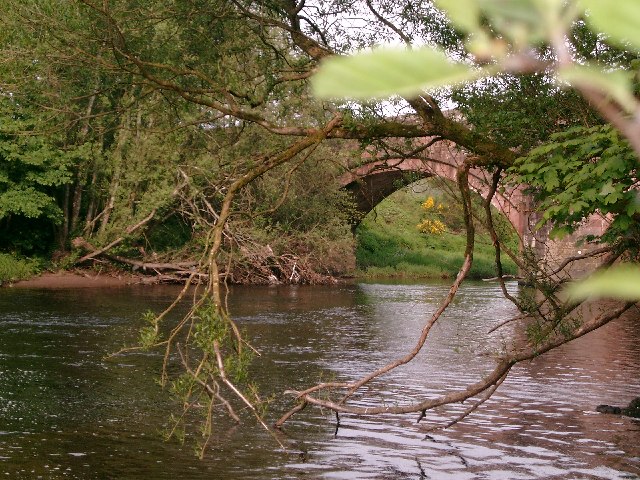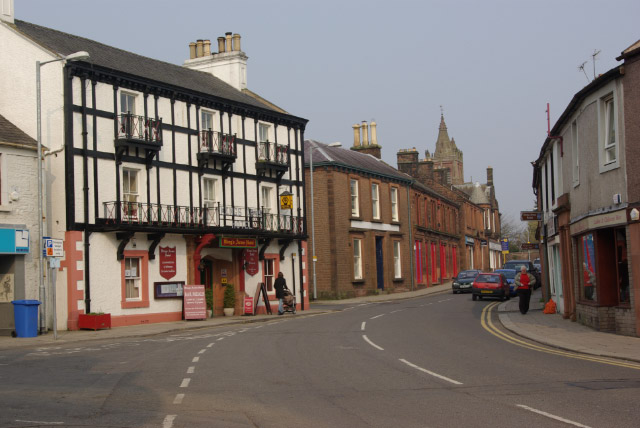|
Dryfe Water
Dryfe Water is a river in Scotland about 18 miles in length which flows into the River Annan at , near Lockerbie. It starts at on the southern slopes of Loch Fell, near Moffat, and then flows along a narrow valley to the Annan. Dryfe Water gives its name to the parish, Dryfesdale, and the common Scottish surname, Drysdale. A second name is the much less common surname Dryfe (or Drife). The meaning of the word Dryfe is unknown. It may be from the Old Norse, Anglo-Saxon language, Anglo-Saxon or Brittonic languages which were all used at different times in Dumfriesshire. References Rivers of Dumfries and Galloway {{Scotland-river-stub ... [...More Info...] [...Related Items...] OR: [Wikipedia] [Google] [Baidu] |
Scotland
Scotland is a Countries of the United Kingdom, country that is part of the United Kingdom. It contains nearly one-third of the United Kingdom's land area, consisting of the northern part of the island of Great Britain and more than 790 adjacent Islands of Scotland, islands, principally in the archipelagos of the Hebrides and the Northern Isles. To the south-east, Scotland has its Anglo-Scottish border, only land border, which is long and shared with England; the country is surrounded by the Atlantic Ocean to the north and west, the North Sea to the north-east and east, and the Irish Sea to the south. The population in 2022 was 5,439,842. Edinburgh is the capital and Glasgow is the most populous of the cities of Scotland. The Kingdom of Scotland emerged as an independent sovereign state in the 9th century. In 1603, James VI succeeded to the thrones of Kingdom of England, England and Kingdom of Ireland, Ireland, forming a personal union of the Union of the Crowns, three kingdo ... [...More Info...] [...Related Items...] OR: [Wikipedia] [Google] [Baidu] |
River Annan
The River Annan is a river in south-west Scotland. It rises on Annanhead Hill and flows through the Devil's Beef Tub, Moffat and Lockerbie, reaching the sea at Annan, Dumfries and Galloway after about 40 miles. Name The etymology of the River Annan is unknown, although some sources suggest it may mean simply "water", from a Celtic language. It gave its name to Annandale, a former stewartry comprising a large portion of modern Dumfriesshire, and to the port town of Annan near its mouth. Description The Annan rises on Annanhead Hill, five miles north of Moffat, near the source of the Tweed ( away), and also close to the source of the Clyde ( away). It then flows through the Devil's Beef Tub, where it is joined by a secondary source that rises on Hartfell. It then flows past the town of Moffat and Lockerbie. Two miles out of Moffat, it is joined by the Moffat Water flowing westward from Loch Skene and the Evan Water flowing eastward from the upper part of Lanarkshire. ... [...More Info...] [...Related Items...] OR: [Wikipedia] [Google] [Baidu] |
Lockerbie
Lockerbie (, ) is a town in Dumfries and Galloway, located in south-western Scotland. The 2001 Census recorded its population as 4,009. The town had an estimated population of in . The town came to international attention in December 1988 when the wreckage of Pan Am Flight 103 crashed there following a terrorist bomb attack aboard the flight. Prehistory and archaeology In 2006, ahead of the construction of a new primary and secondary school, archaeologists from CFA Archaeology undertook excavations. They discovered the remains of a large (27 m x 8 m) Neolithic timber hall that dated to somewhere between 3950 BC to 3700 BC. The archaeologists found it was in use for some time as some of the posts had been replaced. Flax seeds were found in the timber hall, showing the people were processing flax. This is an extremely rare find with only one other site in Scotland showing evidence of flax production in the Neolithic period. Like with most other Neolithic timber halls, ... [...More Info...] [...Related Items...] OR: [Wikipedia] [Google] [Baidu] |
Loch Fell
Loch Fell is a hill in the Ettrick Hills range, part of the Southern Uplands of Scotland. Close to the Southern Upland Way, routes of ascent frequently incorporate its track and it is almost always climbed along with the neighbouring hills. Subsidiary SMC SMC may refer to: Organisations * IEEE Systems, Man, and Cybernetics Society * Special Metals Corporation, an alloy manufacturer * Supreme Muslim Council, former organization in Mandatory Palestine * San Miguel Corporation, a Philippine conglomera ... Summits References Mountains and hills of the Southern Uplands Mountains and hills of Dumfries and Galloway Donald mountains {{Scotland-geo-stub ... [...More Info...] [...Related Items...] OR: [Wikipedia] [Google] [Baidu] |
Moffat
Moffat is a burgh and parish in Dumfriesshire. Part of the Dumfries and Galloway local authority area in Scotland, it lies on the River Annan, with a population of around 2,500. It was a centre of the wool trade and a spa town. Moffat is around to the southeast of Glasgow, southwest of Edinburgh, northeast of Dumfries and northwest of Carlisle. The Moffat House Hotel, located at the northern end of the High Street, was designed by John Adam. The nearby Star Hotel, a mere 20 ft (6 m) wide, was listed in the Guinness Book of Records as the narrowest hotel in the world. Moffat won the Britain in Bloom contest in 1996. Moffat is home to Moffat toffee. The town is held to be the ancestral seat of Clan Moffat. The Devil's Beef Tub near Moffat was used by the members of Clan Moffat and later the members of Clan Johnstone to hoard cattle stolen in predatory raids. Early tourism as a spa town From 1633 Moffat began to grow from a small village into a popular s ... [...More Info...] [...Related Items...] OR: [Wikipedia] [Google] [Baidu] |
Old Norse
Old Norse, also referred to as Old Nordic or Old Scandinavian, was a stage of development of North Germanic languages, North Germanic dialects before their final divergence into separate Nordic languages. Old Norse was spoken by inhabitants of Scandinavia and their Viking expansion, overseas settlements and chronologically coincides with the Viking Age, the Christianization of Scandinavia, and the consolidation of Scandinavian kingdoms from about the 8th to the 15th centuries. The Proto-Norse language developed into Old Norse by the 8th century, and Old Norse began to develop into the modern North Germanic languages in the mid- to late 14th century, ending the language phase known as Old Norse. These dates, however, are not precise, since written Old Norse is found well into the 15th century. Old Norse was divided into three dialects: Old West Norse (Old West Nordic, often referred to as ''Old Norse''), Old East Norse (Old East Nordic), and Old Gutnish. Old West Norse and O ... [...More Info...] [...Related Items...] OR: [Wikipedia] [Google] [Baidu] |
Anglo-Saxon Language
Old English ( or , or ), or Anglo-Saxon, is the earliest recorded form of the English language, spoken in England and southern and eastern Scotland in the Early Middle Ages. It developed from the languages brought to Great Britain by Anglo-Saxon settlers in the mid-5th century, and the first Old English literature dates from the mid-7th century. After the Norman Conquest of 1066, English was replaced for several centuries by Anglo-Norman (a type of French) as the language of the upper classes. This is regarded as marking the end of the Old English era, since during the subsequent period the English language was heavily influenced by Anglo-Norman, developing into what is now known as Middle English in England and Early Scots in Scotland. Old English developed from a set of Anglo-Frisian or Ingvaeonic dialects originally spoken by Germanic tribes traditionally known as the Angles, Saxons and Jutes. As the Germanic settlers became dominant in England, their language ... [...More Info...] [...Related Items...] OR: [Wikipedia] [Google] [Baidu] |
Brittonic Languages
The Brittonic languages (also Brythonic or British Celtic; ; ; and ) form one of the two branches of the Insular Celtic languages; the other is Goidelic. It comprises the extant languages Breton, Cornish, and Welsh. The name ''Brythonic'' was derived by Welsh Celticist John Rhys from the Welsh word , meaning Ancient Britons as opposed to an Anglo-Saxon or Gael. The Brittonic languages derive from the Common Brittonic language, spoken throughout Great Britain during the Iron Age and Roman period. In the 5th and 6th centuries emigrating Britons also took Brittonic speech to the continent, most significantly in Brittany and Britonia. During the next few centuries, in Celtic language decline in England, much of Britain the language was replaced by Old English and Scottish Gaelic, with the remaining Common Brittonic language splitting into regional dialects, eventually evolving into Welsh, Cornish, Breton, Cumbric, and probably Pictish. Welsh and Breton continue to be s ... [...More Info...] [...Related Items...] OR: [Wikipedia] [Google] [Baidu] |
Dumfriesshire
Dumfriesshire or the County of Dumfries or Shire of Dumfries () is a Counties of Scotland, historic county and registration county in southern Scotland. The Dumfries lieutenancy areas of Scotland, lieutenancy area covers a similar area to the historic county. In terms of historic counties it borders Kirkcudbrightshire to the west, Ayrshire to the north-west, Lanarkshire, Peeblesshire and Selkirkshire to the north, and Roxburghshire to the east. To the south is the coast of the Solway Firth, and on the other side of the border between Scotland and England the England, English county of Cumberland. Dumfriesshire has three traditional subdivisions, based on the three main valleys in the county: Annandale, Dumfries and Galloway, Annandale, Eskdale, Scotland, Eskdale and Nithsdale. These had been independent provinces of Scotland, provinces in medieval times but were gradually superseded as administrative areas by the area controlled by the sheriff principal, sheriff of Dumfries, or ... [...More Info...] [...Related Items...] OR: [Wikipedia] [Google] [Baidu] |





